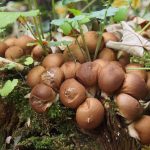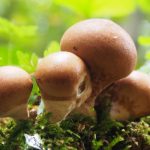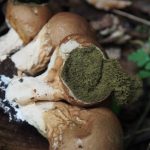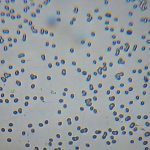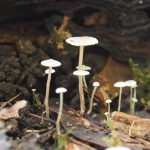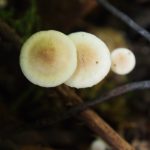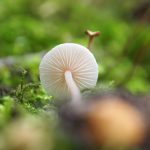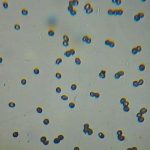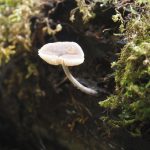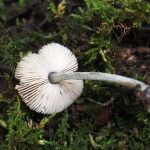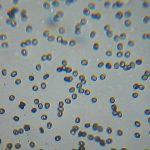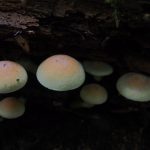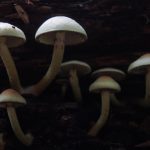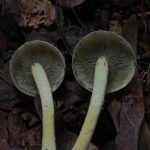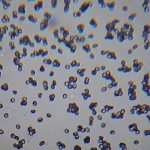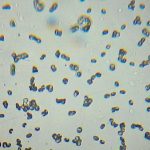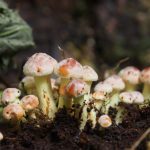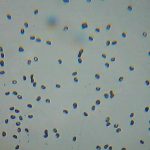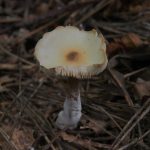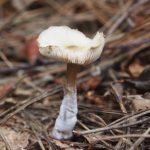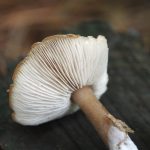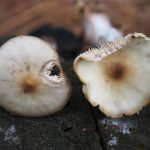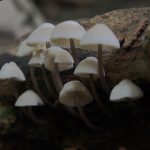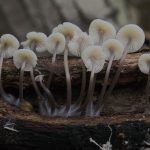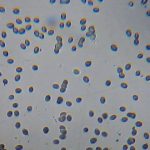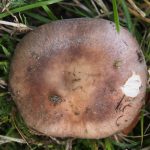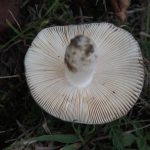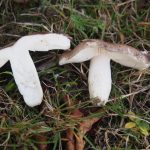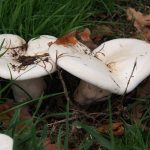This was my first visit to Joydens Wood. It’s an ancient woodland so should be a happy hunting ground for fungi, but was unfortunately vandalised by the Forestry Commission onwards from the 50’s. (They cleared existing flora and planted alien tree species/varieties.) But it’s now in recovery…
I honestly didn’t find many mushrooms. The habitat has a lot of variety with many different tree species scattered throughout, so should be good, but something with the weather this year must have discouraged them.
No matter, there is some advantage in not finding any striking distinctive mushrooms, in that I pay more attention to the drab boring ones! So Wood Woollyfoot (assuming that my identification is correct) is one of the most common species but not recorded by me before. Then there’s lots of different Bonnets and they all look fairly similar, but Angels Bonnet is new one for me and quite striking in the way it has grown in a curve around its branch. Pluteus cinereofuscus is just a moderately unimpressive looking type of Shield but it only took me 20 minutes to identify (at home) so I must be getting better at this. I wouldn’t normally bother with Sulphur Tuft or Brick Tuft as they’re so common but beggars can’t be choosers. The Sulphur Tufts were much prettier than usual. The Charcoal Burner wasn’t in the woods but beside the busy North Cray Road. I tasted a small part of this one (as the mildness or heat can be important for identification) and it was mild and quite nice. I need to pay more attention to Russulas as this one is good to eat according to my books.

